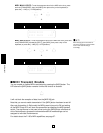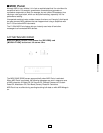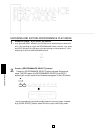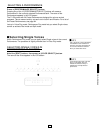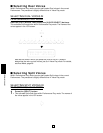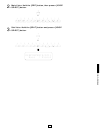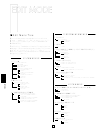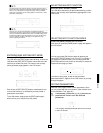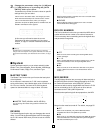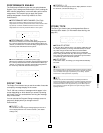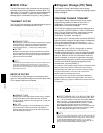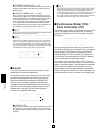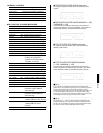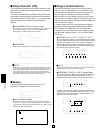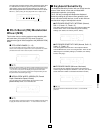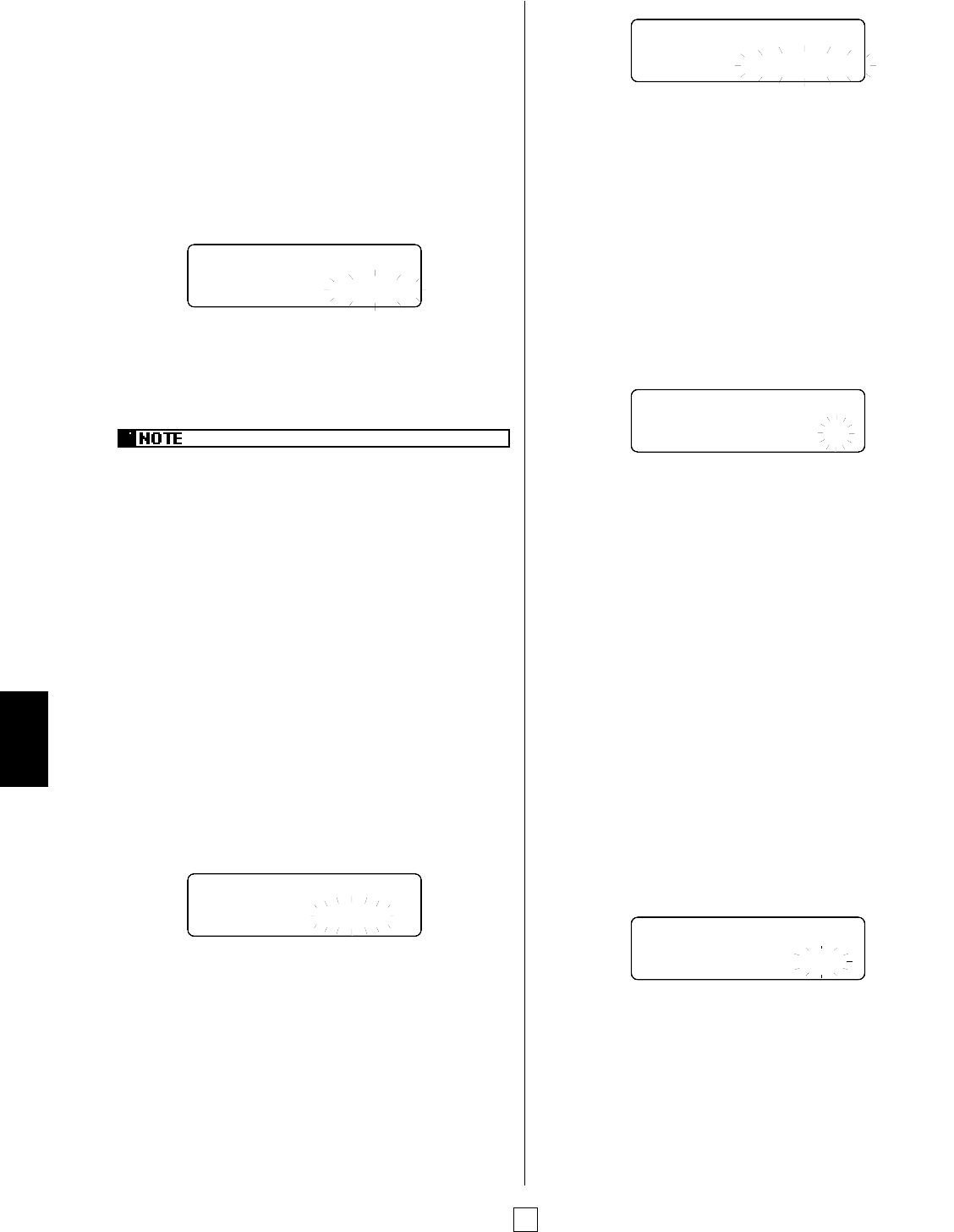
● ACTIVE
When the Active setting is selected, the P-150’s on-board reverb
effects will function as normal.
● BYPASS
When the Bypass setting is selected, the P-150’s on-board
reverb effects will be disengaged.
DEVICE NUMBER
The Device Number function lets you match the MIDI device
number with the device number of an external instrument.
This is necessary when transmitting and receiving bulk data
and parameter change data.
● OFF
When set to Off, the P-150 will ignore incoming MIDI device
number messages.
● 1 ~ 16
When a specific MIDI device number is selected, the P-150 will
only receive bulk data on the corresponding MIDI device
number.
● ALL
When set to All, the P-150 will receive bulk data on any device
number. (When set to All, the P-150 will transmit on device
number 1.)
MIDI MERGE
The MIDI Merge function lets you merge all data received at
the [MIDI IN] terminal with the data generated by the P-150,
for combined transmission at the [MIDI OUT] terminal.
Instruments which receive merged MIDI data from the P-150
can be controlled by the P-150 as well as other devices
connected to the P-150’s [MIDI IN] terminal.
Note that when performing bulk dump operations, the MIDI
Merge function must be turned off. For details, see page 55.
● OFF
When set to Off (default), only internal MIDI data will be
transmitted from the P-150’s [MIDI OUT] terminal.
● ON
When set to On, any MIDI data received at the [MIDI IN] terminal
will be transmitted as is from the [MIDI OUT] terminal together
with data transmitted by the P-150.
2.
Change the parameter using the [–1/NO] and
[+1/YES] buttons, or by moving the [DATA
ENTRY] slider up or down.
Parameters may consist of numeric values or specific
settings which you can select.
If the P-150 is in Auto Store status, the changes you make
will be stored automatically in the current location. If the P-
150 is in Non Auto Store status, when you change a
parameter and press the [EDIT] button to exit Edit mode, the
STORE? confirmation screen appears.
In this case you will need to store the current
Performance by either overwriting it in its current
location, or copy it in another Performance bank and
number.
Regardless of the Auto Store/Non Auto Store status, the parameter
changes made in the System menus (System, MIDI Filter, PC Table) are
always stored automatically. (For details about store functions, see page
53.)
■ System
System parameters which you can select and edit include
Master Tune, Reverb Bypass, Device Number, MIDI Merge,
Performance Enable, Popup Time, and Store Type.
MASTER TUNE
The Master Tune function lets you fine-tune the basic pitch
of the keyboard.
As an electronic instrument, the P-150 is set to optimum
tuning at the factory, with a default pitch value of 440.0 Hz at
A3. You can, however, fine-tune the P-150’s keyboard
upward or downward within a range of about 100 cents.
● MASTER TUNE (424.0Hz~440.0~456.3Hz)
You can change the master tuning between 424.0Hz and
456.3Hz.
REVERB
The Reverb Bypass function lets you disengage the reverb
effect. You will find the Reverb Bypass useful to disengage
the P-150’s internal DSP when you want to use an external
effector.
44
EDIT MODE
REVERB 2
active
STORE? (YES/NO)
Voices -›Voices
MASTER TUNE 1s
440.0Hz
DEVICE NUMBER 3
1
MIDI MERGE 4
off



